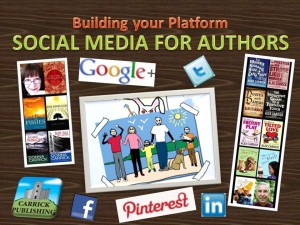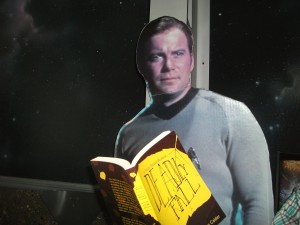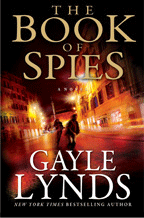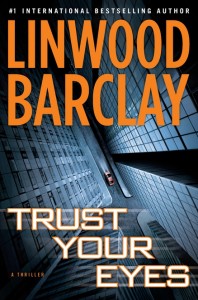Sunday, June 3rd, the final morning of Toronto’s Bloody Words conference, offered a choice of workshops and a play, each running for three hours. I was tempted by the workshop on Editing Your Manuscript, but I have a perpetual need to learn about social media and opted for that one. That I have much to learn was brought home for me when the session leaders listed the five social media systems they planned to discuss. I hadn’t heard of two of them.

The leaders were Donna and Alex Carrick, authors who own a publishing firm and are heavily into social media. Check out their company’s webpage. Their philosopy is to take advantage of all the free social media out there. For writers, they consider the most valuable of these to be Twitter.
I’m on Twitter, but don’t tweet a lot. During this hands-on workshop with our laptops, I sent out some requests to increase my number of Twitter followers and followees, changed my Twitter name from @Calbugs to @Susan Calder to present a more professional image and changed my wallpaper (Twitter page background) to one I found more attractive. Some day I might create a wallpaper from tile images of my book cover(s). This looks appealing on Donna’s Twitter page.
I also learned that Twitter won’t allow you to follow more than 2,000 people unless that many people are following you. Twitter prefers a balance of follower to followee. If you’re approaching the 2,000 following threshhold, go to www.justunfollow.com for a list of your followees who aren’t following you and stop following them. You can now follow people who will return the favour.
To be viewed as an active Twitterer, you need about 1,000 followers. To break through and get people coming to your blog site and reading it requires about 10,000 followers. With my 186 followers, I’m a long way from either of these threshholds.
Facebook, in Donna’s and Alex’s views, is the next most effective social media. It’s the one I’m most involved in, although I wouldn’t call myself highly involved. I check into facebook about once a day – okay, often more than that – to find out what my friends are up to, comment, ‘like’ others’ comments and post pictures.
Next in social media effectiveness is Linked-in. I’m a member, but do even less with it than with Twitter. It tends to be more useful for business networking rather than for writing. Fourth and Fifth are the two systems that were new to me: Google+ and Pinterest. Google+ is like facebook, except that you deal in circles of friends. Pinterest is a virtual cork board, where you ‘pin’ your interests in the form of visuals. This appeals to me, in an artsy way. Alex and Donna suggested we pin thumbnails of our book covers. My son’s girlfriend said if I pinned mine, she would forward the image to her Pinterest friends.
As always, after a talk on social media, I left feeling that I’ll never catch up and that you could easily spend 24 hours a day surfing the various social media. While I was on this holiday to Bloody Words and beyond, I checked my e-mail and facebook, but not nearly as much as usual. My messages diminished because I wasn’t sending any. I enjoyed this break from social media as much as I enjoyed the rest of my holiday from my routine. It makes me wonder if a total withdrawl from social media would be freeing. How wonderful to enjoy the silence rather than the noise of continuous communication.
I’m probably too hooked on social media to do this, but it is tempting.






